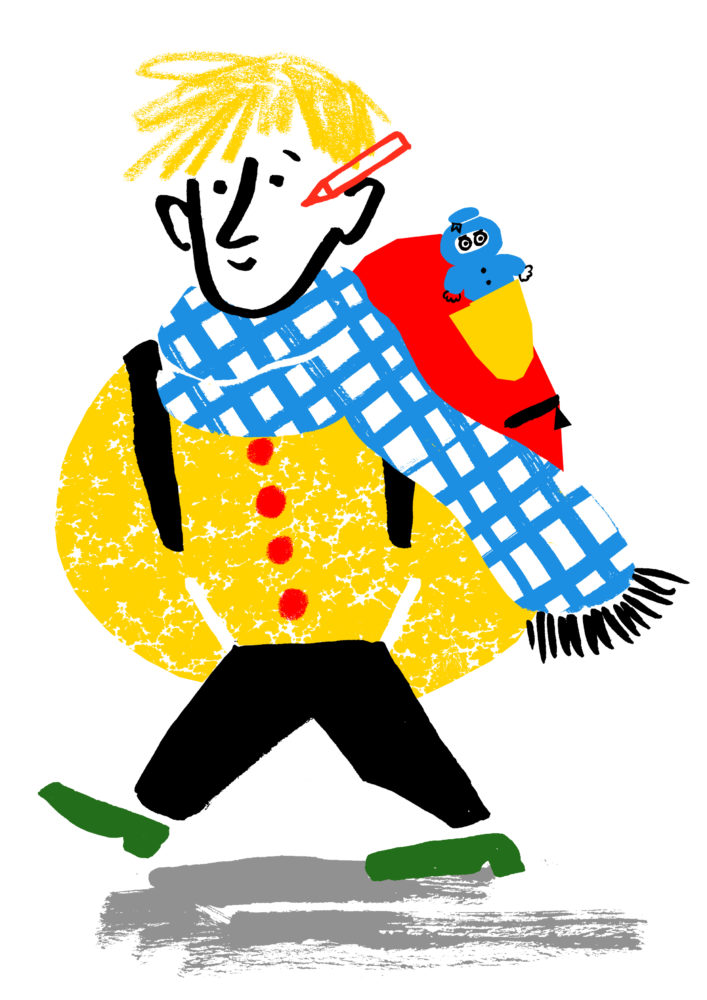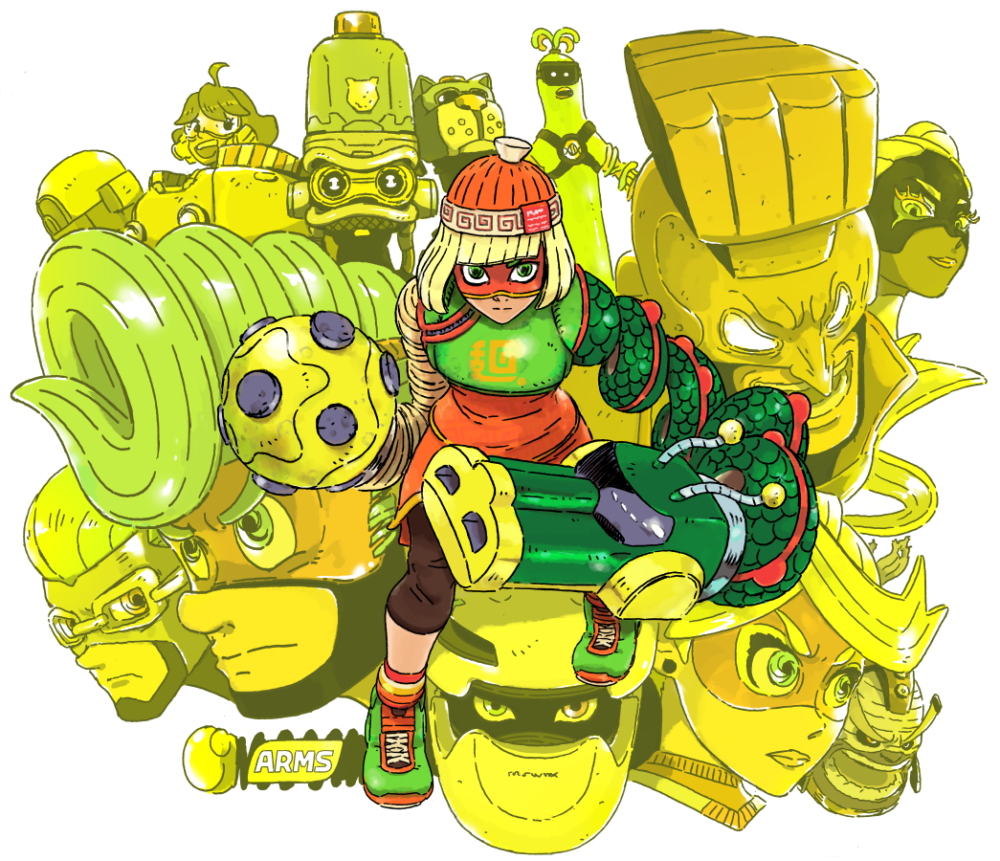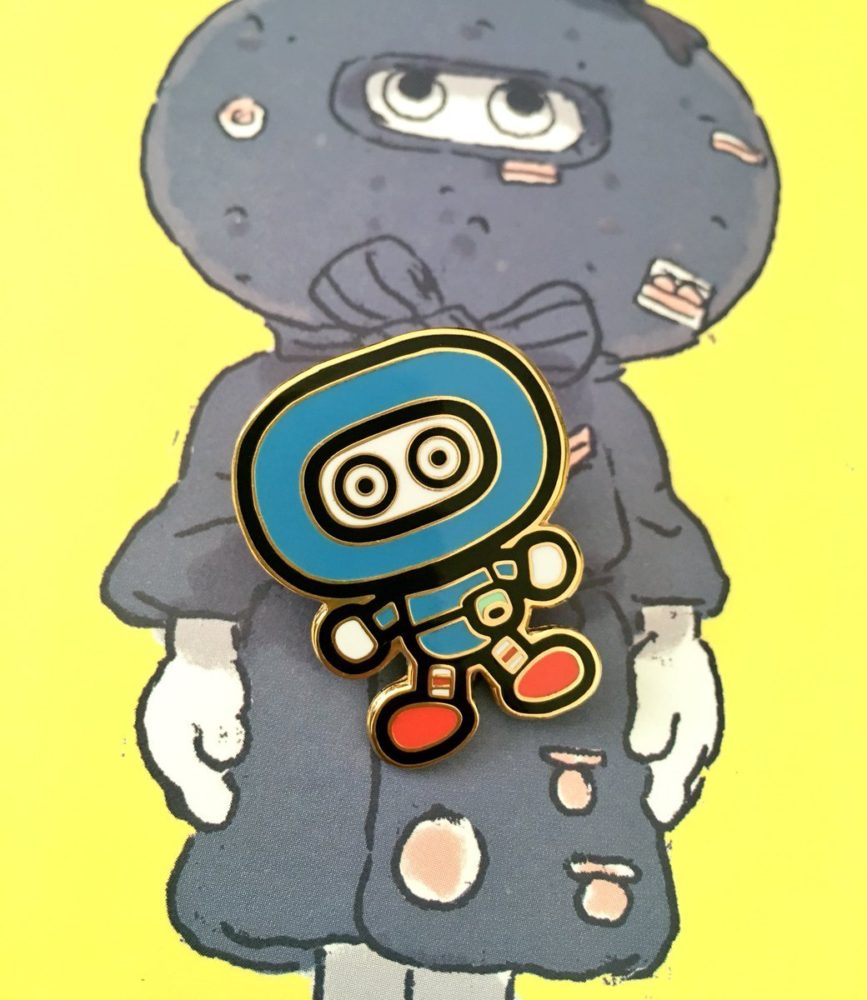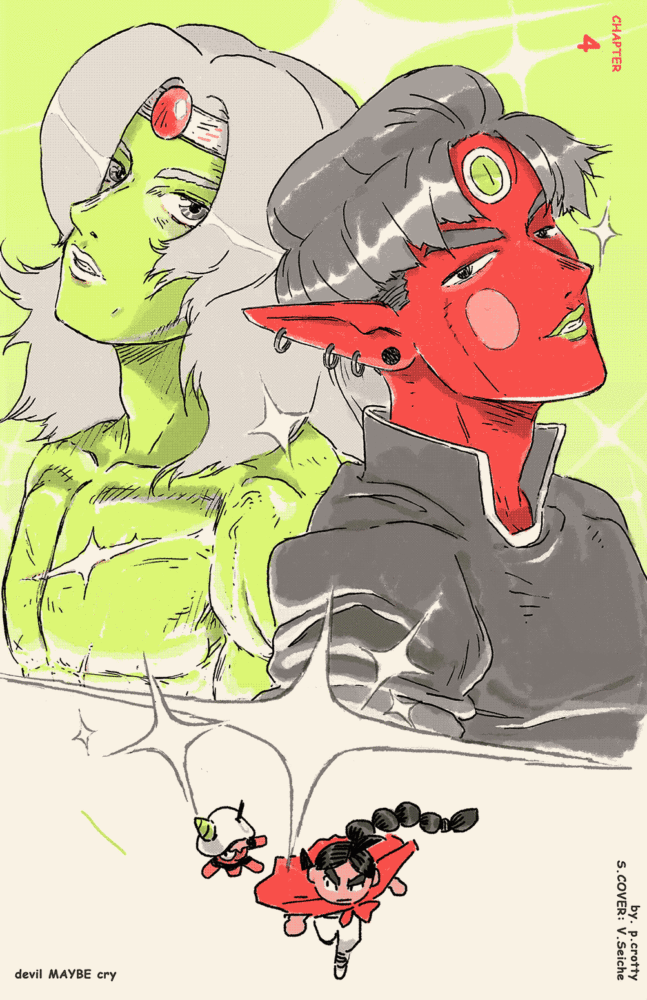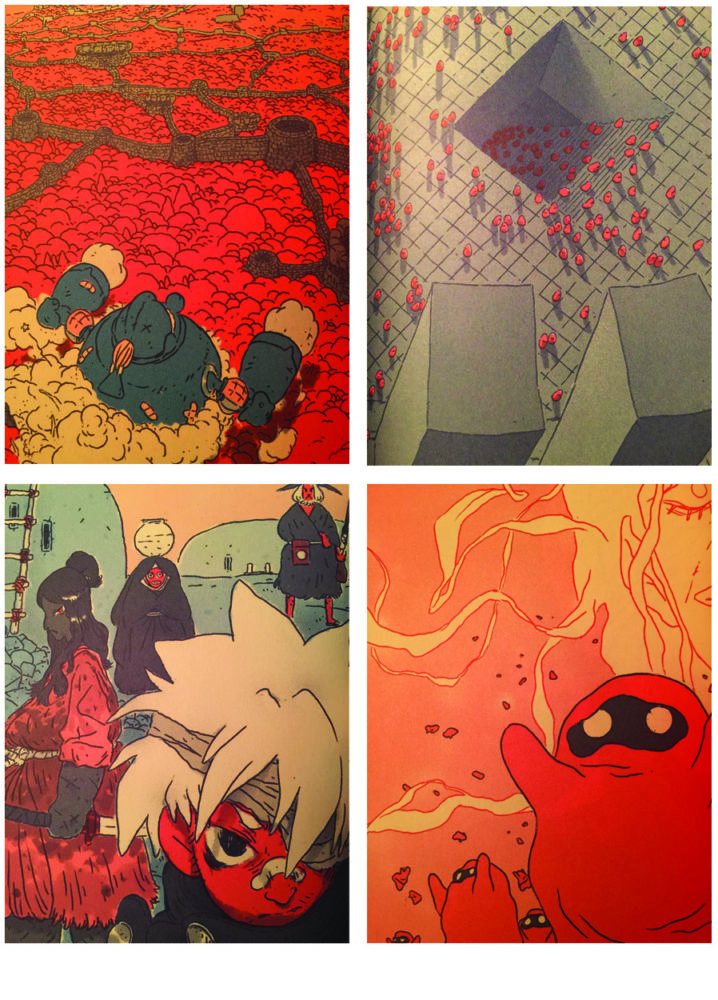Interview and portrait by Yuliya Gwilym
Yuliya: Hello Valentin, nice to virtually see you! Could you tell us a bit about who you are, what you do, and where you are in the world right now?
Valentin: Hi Yuliya, very happy to be here. Well I’m Valentin Seiche a.k.a. Airfortress. I draw comics, mostly with the Peow team. Right now I’m in my bed, it’s winter, and this oil radiator is my best friend.
What was it that made you start drawing? Were you always interested in it, or was there something else before that you wanted to do?
I remember I wanted to be a magician, then a cook. It took me time to understand drawing could be a job. But I was always drawing as far as I remember. I think my older brothers that were drawing all the time and watching anime, reading manga and playing Nintendo kind of “shaped” me as I am. Also toys.
I’m interested in your process — I’ve heard that you often work on the go! It sounds really hardcore, how does your process work?
Yes I do! Less this year because I was a bit weak, but I enjoy drawing on the train. Well, I really enjoy being able to do it; this freedom makes me happy, but it can be really hard to focus… I often end up drawing new stuff rather than the current tasks I should do… I drew my book “the world” when I was in Okinawa, whereas I had other initial objectives. It’s also part of this freedom to follow where my drawing leads me as much as possible.
How do you motivate yourself if you’re often travelling and working — how do you focus on the working part of that?
I have lots of friends living in different cities or even countries but I can feel lonely working at my place. I feel if I don’t go visit my friends I won’t see them, so as much as my health allows me I try to travel and share time with them – even if it’s harder to work on the go, good moments with friends give me energy, so it balances. Because I have a rebel form of psoriasis sometimes my health is low and I can’t travel or work. This year was really bad but I decided to join a friend going to Japan. I’m happy I did it because it’s better being ill in a onsen surrounded by mountains at night than alone in my room.
Your stories are sometimes dark or even a little violent – but then you still have the most adorable characters! How do you make these two worlds live together?
It’s important, and I wish I could just draw happy stuff but I can’t ignore all the violence of humans, myself included. It’s true I draw round and cartoony characters but it makes me want to write complex stories with them even more. More and more I try to translate my own experiences in my comics, but because I don’t like drawing reality so much I prefer to give it other forms. Part of my drawing is a reflection on shapes and volumes: how to keep it expressive and simple but bring realism in details, like the way a rope is tied or a cloth falls on a body. As much as I feel it’s important to improve this sensation of realism in every element, it’s also important to have it in the stories, the dialogues and reactions of the characters.
It seems that you always create imaginary worlds and that your comics are full of fantasy. But I wonder if you have a message that you want to tell through this, or is it purely for people to enjoy and interpret as they see it?
It’s a complex question – I’ll try not to talk too much! I think I’m better with imaginary worlds – because of my background I come up with fantasy more easily than reality. I don’t have a precise message for the people that read my books, and I hope they’ll interpret it themselves, even though my stories do carry reflections and values. The hard thing is being able to infuse those ideas properly in my imaginary worlds, which I hope I can do better in the coming years. I like to connect my fantasy work with my personal experience, like psoriasis and travelling. Right now I’m working on a book where the heroine lives in a big city that rejects her, no matter how hard she struggles to integrate herself. It’s also a fun story with samurais and action but this struggle is an echo of my own struggle as a small comic artist to understand how I can integrate myself in society.
Your work usually comes as physical objects, and sometimes in boxes or with pins. How do you approach the design and packaging of your work?
Well first I want to thank my publisher Peow for giving me the opportunity to do so. One thing I try to do is to propose something fresh; even if my stories and drawings are clumsy, I’m happy if I can effect this feeling of freshness to the people that buy my books, like a good surprise. When I was a kid my mother would leave me in front of the toys while she was doing groceries – at that time there was a lot of creativity in toys series, constantly new universes and designs and ideas that were original creations for the toys and not from any famous licence. I feel there is much creation today, but so much where you can tell what inspired it, as well as so much fan-art and licensing. I miss the feeling of discovering an unexpected, fresh creation, something that was not overthought and created to be sure everybody would like share and buy the content. So I try to design my books like those old toys.
Coming from France, which has a rich history of graphic novels and storytelling, I’m interested in how you came to the style you have now, which also has a clear Asian influence to it. Tell us about your Asian love!!
Ahaha I can’t hide it! I’m way more influenced by Asian /mostly Japanese culture than French comics. I mentioned my brothers brought me to this culture, and today I’m still digging it. I don’t how to answer – should I name drop major artists, video-games or talk about this Japanese guy I follow on Twitter that crafts cute toys with complex shapes and articulations in paper in a such ingenious way that it makes me feel deeply happy? There are so many things that I found only in that country. I want to get better and transmit a part of what I found there in my books.
Being an artist myself, I know that it’s sometimes hard to make ends meet. How do you battle this challenge, and what advice do you have for other creatives?
Yes, it can be hard depending on what you try to reach. I try to not give up, but it’s hard sometimes. Also I don’t feel like I have another choice right now that would make me happy. As advice I would say: connect to people, travel if you have the opportunity, and work more directly relative – if you can’t finish one big project then do many small ones, those victories will give you the energy to keep on with the longer one.
Thanks Valentin!
See more of Valentin’s work at his tumblr., Instagram and Twitter.
Read an interview with Yuliya by Rosie Brand here, and see more of her work at her website, Instagram and Twitter too!
All images are All Rights Reserved © Valentin Seiche, except the first portrait © Yufrukt 2018.

